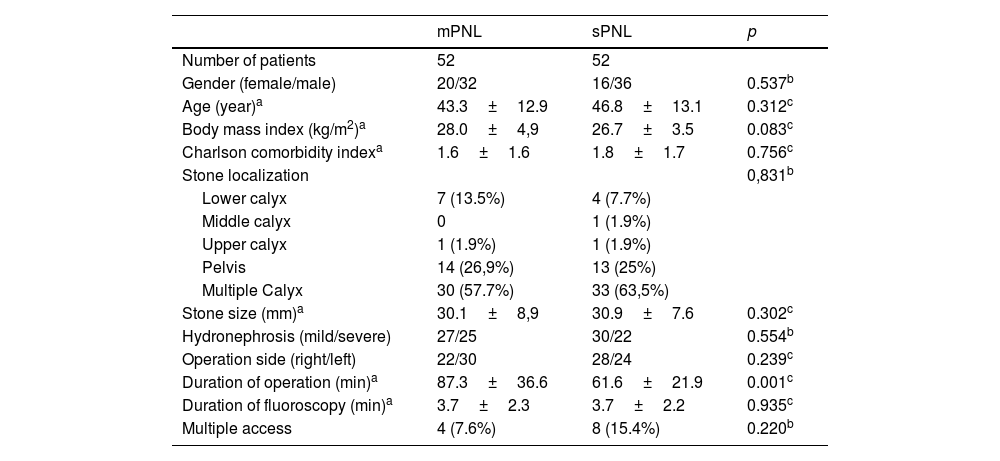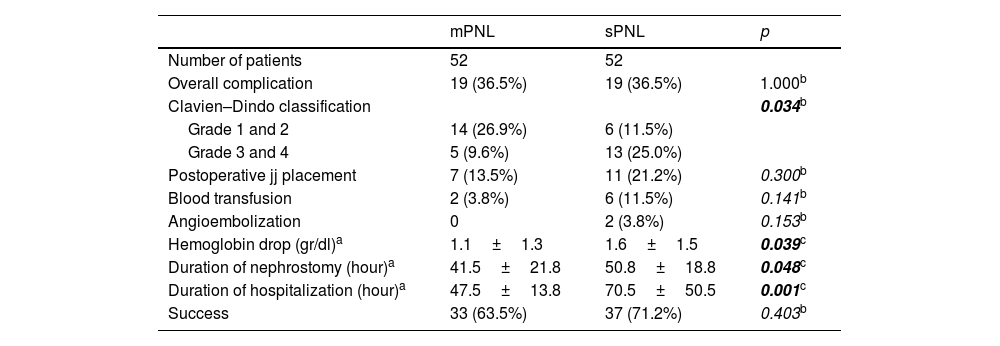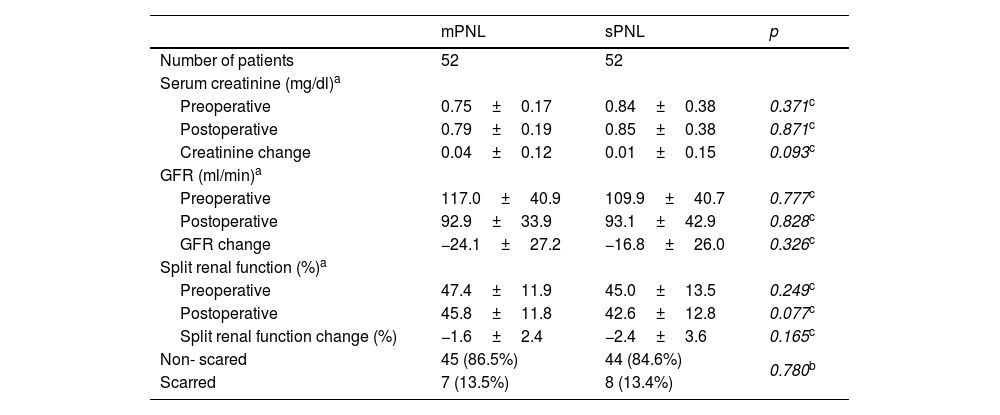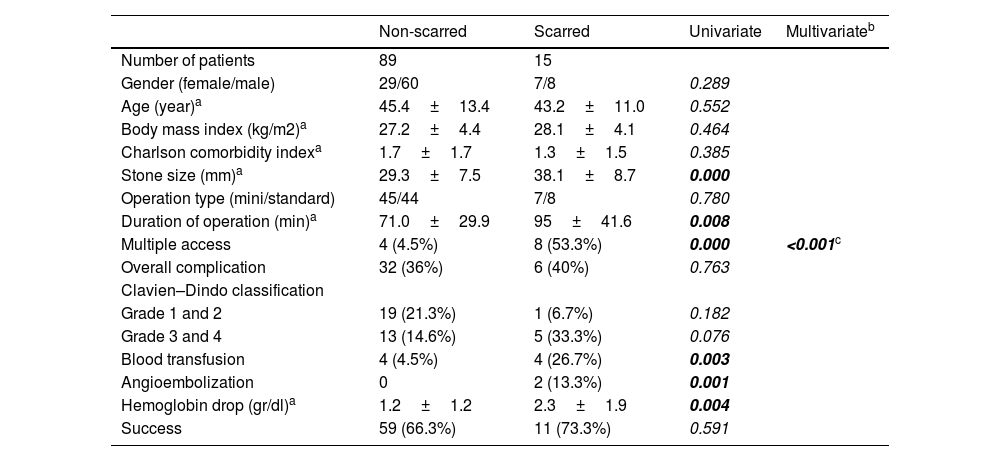We aimed to present a clinical study that compares standard and miniaturized percutaneous nephrolithotomy (PNL) effects on kidney function with scintigraphic imaging in primary kidney stone patients.
Materials and methodsOne hundred four patients were included in this prospective study between May 2014 and February 2017. Eligible patients were divided into two groups miniaturized PNL (mPNL) and standard PNL (sPNL) with matched-pair analysis (1:1 scenario). Technetium-99m Dimercaptosuccinic Acid cortical scintigraphy imaging was performed before and after the operation.
ResultsThere were no differences between the two groups in terms of success rate (mPNL (63.5%) vs. sPNL (71.2%), p=0.403), serum creatinine, glomerular filtration rate, split renal functions pre- and postoperatively (p≥0.05). There was no relationship between the type of operation and new scar formation (p=0.780). The rates of serious complication (grades 3 and 4 according to modified Clavien–Dindo Classification) were higher in sPNL (p=0.034). Stone burden, duration of operation, hemoglobin drop, multiple access, blood transfusion, and angioembolization were higher in patients with scarred kidneys (p<0.001, p=0.008, p=0.004, p<0.001, p=0.003, p=0.001, respectively). In multivariate analysis, only multiple access was found statistically significant for predicting new scar formation (p<0.001, OR: 24.28).
ConclusionsMiniaturized and standard PNL are reliable and successful operations for treating large kidney stones. No significant difference was found between the operation types regarding a decrease in renal function.
Nos propusimos realizar un estudio clínico para comparar los efectos de la nefrolitotomía percutánea (NLP) convencional y miniaturizada sobre la función renal evaluada mediante imágenes de gammagrafía en pacientes con cálculos renales primarios.
Materiales y métodosCiento cuatro pacientes fueron incluidos en este estudio prospectivo entre mayo de 2014 y febrero de 2017. Los pacientes elegibles se dividieron en dos grupos: NLP miniaturizada (NLPm) y NLP convencional (NLPc) mediante muestras emparejadas (escenario 1:1). Se realizó una gammagrafía cortical con ácido dimercaptosuccínico de tecnecio-99m antes y después de la intervención.
ResultadosNo hubo diferencias entre los dos grupos en cuanto a las tasas de éxito (NLPm (63,5%) frente a NLPc (71,2%), p=0,403), creatinina sérica, tasa de filtración glomerular, funciones renales diferenciales evaluadas antes y después de la intervención (p≥0,05). No hubo relación entre el tipo de procedimiento y la formación de nuevo tejido cicatricial (p=0,780). Las tasas de complicaciones graves (grados 3 y 4 según la clasificación de Clavien–Dindo modificada) fueron más altas en la NLPc (p=0,034). La carga litiásica, el tiempo quirúrgico, el descenso de la hemoglobina, los accesos múltiples, la transfusión de sangre y la angioembolización fueron mayores en los pacientes con riñones cicatrizados (p<0,001, p=0,008, p=0,004, p<0,001, p=0,003, p=0,001, respectivamente). En el análisis multivariante, sólo el acceso múltiple resultó estadísticamente significativo para predecir la formación de tejido cicatricial nuevo (p<0,001, OR: 24,28).
ConclusionesLa NLP miniaturizada y la convencional son intervenciones fiables y efectivas para el tratamiento de cálculos renales de gran tamaño. No se encontraron diferencias significativas entre los dos procedimientos en cuanto a la disminución de la función renal.











